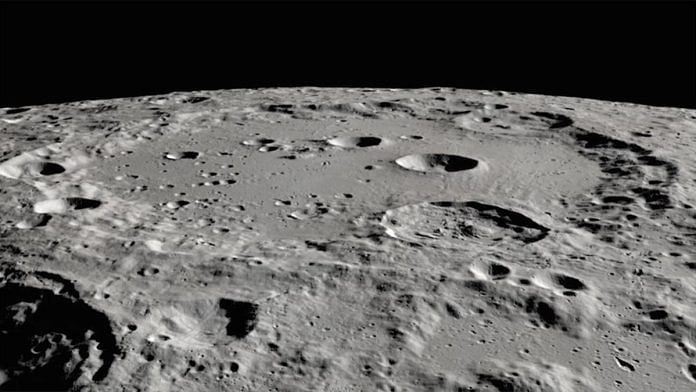Bengaluru: As the nation waited with bated breath, ISRO’s Chandrayaan-3 landed safely near the lunar South Pole Wednesday, marking a major milestone for space exploration in India.
Over the next two weeks, the Vikram lander and Pragyan rover will perform experiments on the lunar surface with a total of six payloads, while the seventh payload continues to observe Earth from the propulsion module which is orbiting the Moon.
This landing makes India the fourth country to successfully perform a soft landing on the Moon, following the US, Russia (then USSR), and China. Despite the unfortunate crash of Luna 25 on 19 August, Luna 9 was the first to achieve a soft landing on the Moon in 1966.
There have been a total of 21 successful landings on the Moon, despite attempts to get there since the 1960s and 70s.
NASA has been the only space agency to send humans to the Moon with the Apollo missions. A total of 12 men have walked on the Moon, beginning with Neil Armstrong and Buzz Aldrin in July 1969, and ending with Gene Cernan and Jack Schmitt in Apollo 17 in 1972.
Here, ThePrint puts together a list of successful lunar landers and rovers, and what they achieved.
Also Read: Chandrayaan 1, 2 & 3 — how ISRO used each Moon mission as test for next, more complex expedition
Successful lunar landers & rovers
The first mission to get near the Moon was the USSR’s Luna 1, while Luna 2 became the first to impact the Moon in 1959. For the next few years, both the USSR and the US either flew by the Moon or impacted probes on it, but could not achieve soft landing, or even orbital insertion. In fact, Luna 10 became the first to enter lunar orbit.
Things changed from 1966 onwards as the Cold War space race to get to the Moon heated up.
Luna 9 performed a controlled landing in February 1966, while Luna 13 repeated this in December that year. The same year, after Luna 9, the US landed Surveyor 1 on the lunar surface, which sent back more than 11,000 images. All these missions sent back pictures to Earth, which became the first ever pictures to be taken on the surface of the Moon.
USA’s Surveyor 3 landed on the Moon in 1967, while Surveyor 5 did so a few months later. Surveyor 6 landed the same year, while Surveyor 7 did so in 1968.
After several failures in the USSR’s Luna programme, and USA’s Pioneer and Ranger (uncrewed) programmes, the next successful soft landing was achieved by Luna 16 in 1970, and it also returned lunar soil to Earth. Luna 17 was the first to deploy a rover on the Moon, which travelled over 10 km on the lunar surface in 1970. Luna 20 in 1972 returned lunar soil to Earth, while the Luna 21 rover moved 37 km across the lunar surface in 1973.
Luna 24, the mission prior to Luna 25, carried a lander that reached the Moon in 1976, and brought back soil samples.
Between 1969 and 1972, the Apollo programmes also achieved soft landing with humans.
The crewed USSR missions did not materialise, but America sent six missions that landed successfully with humans and brought them back to Earth.
These are Apollo 11 in 1969, followed by Apollo 12 later that year. And while Apollo 13 did not land, the crew on board became the ones to travel the farthest from Earth ever as they looped around the Moon to return to Earth. Apollo 14 and 15 landed in 1971, while Apollo 16 and 17 landed in 1972, concluding human missions to the Moon.
A few crash landings occurred in the 1990s and the 2000s, including probes from Japan, USA, EU, Luxembourg, Israel, China, and India (through the Chandrayaan-1 impactor).
Missions to the Moon picked up again over the next decade with China.
In December 2013, China landed its Chang’e 3 lander and Yutu rover on the Moon, marking the first soft landing after Luna 24 in 1976. In 2019, China broke a record and landed Chang’e 4, the first mission and currently the only mission, to have landed on the far side of the Moon. It also carried a rover called Yutu-2. Chang’e 5 landed and collected samples in 2020, and was the last soft landing before Chandrayaan-3.
To date, the US is the only country to have sent humans to the Moon, China is the only country to have landed on the far side of the Moon, and India the only country to have landed near the South Pole of the Moon.
(Edited by Amrtansh Arora)
Also Read: As Chandrayaan-3 touches down on Moon’s surface, meet the key scientists behind mission



